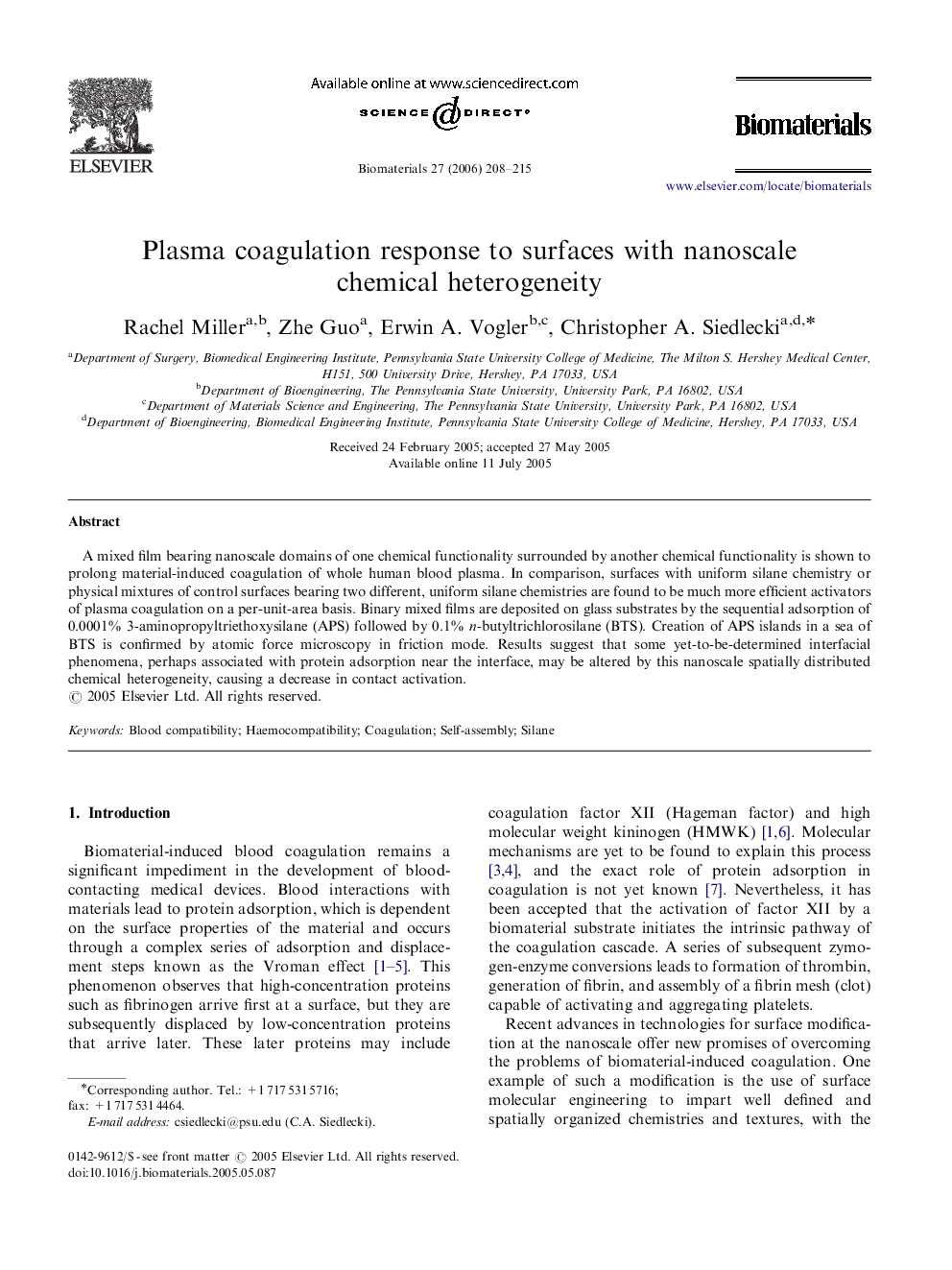| Article ID | Journal | Published Year | Pages | File Type |
|---|---|---|---|---|
| 12296 | Biomaterials | 2006 | 8 Pages |
A mixed film bearing nanoscale domains of one chemical functionality surrounded by another chemical functionality is shown to prolong material-induced coagulation of whole human blood plasma. In comparison, surfaces with uniform silane chemistry or physical mixtures of control surfaces bearing two different, uniform silane chemistries are found to be much more efficient activators of plasma coagulation on a per-unit-area basis. Binary mixed films are deposited on glass substrates by the sequential adsorption of 0.0001% 3-aminopropyltriethoxysilane (APS) followed by 0.1% n-butyltrichlorosilane (BTS). Creation of APS islands in a sea of BTS is confirmed by atomic force microscopy in friction mode. Results suggest that some yet-to-be-determined interfacial phenomena, perhaps associated with protein adsorption near the interface, may be altered by this nanoscale spatially distributed chemical heterogeneity, causing a decrease in contact activation.
